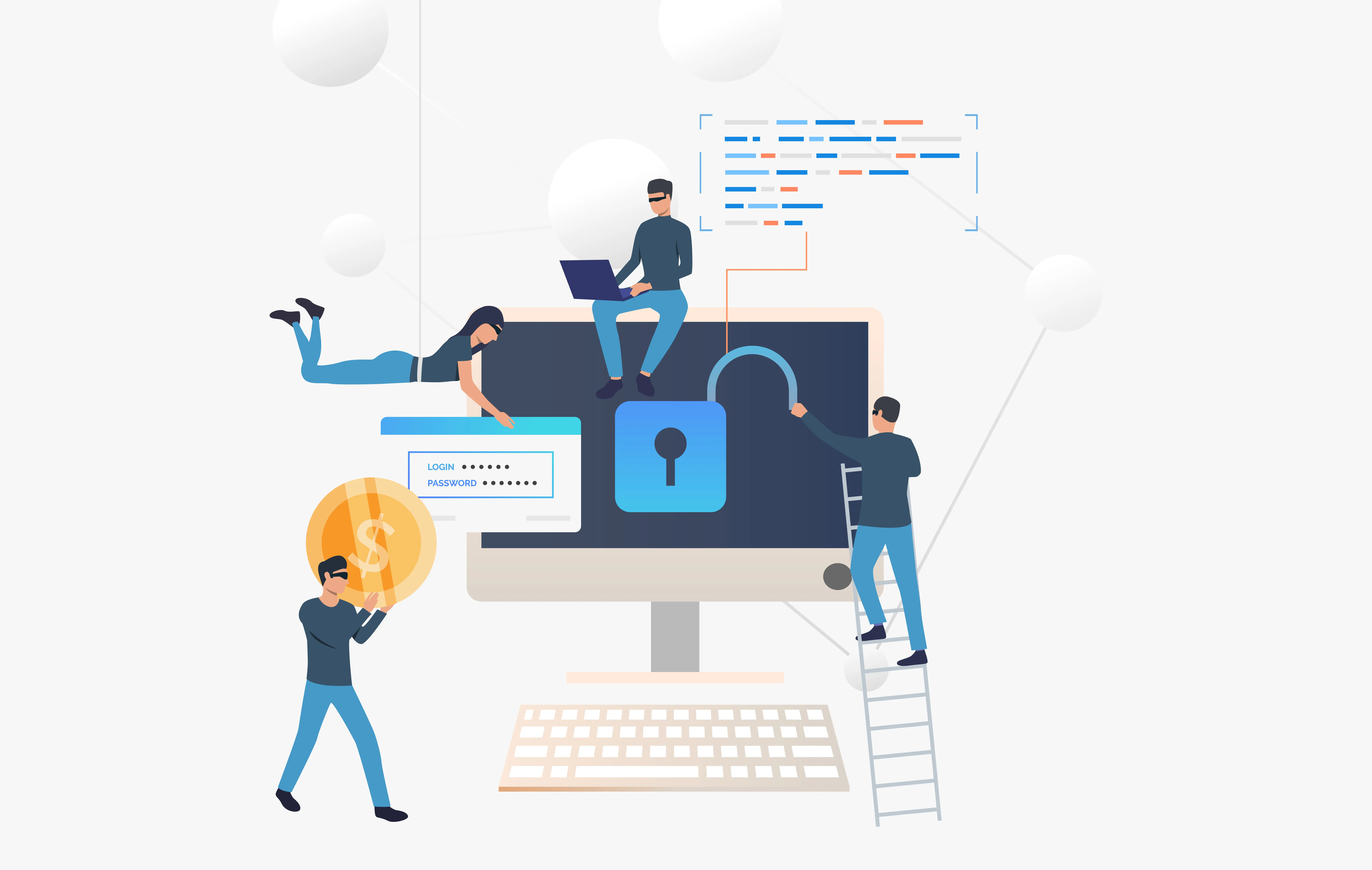Effectively managing your organization's digital attack surface requires constant discovery and surveillance. For security teams to successfully manage this area, communication with other stakeholders must be swift and easy to speed up remediation workflows and accelerate remediation timelines.
Attackers constantly probe your attack surface in search of an entry point into the organization. To stay ahead, your teams need to think like attackers: discover and enumerate internet-facing assets, understand their unique fingerprints, and identify vulnerabilities and risks.
Asset Discovery
Locating all assets exposed to the Internet is key for understanding an organization's digital footprint and any vulnerabilities attackers could exploit, as well as mitigating cyber threats and unauthorized access that could lead to data breaches, damaged customer relations, and an impactful blow against its reputation.
Asset discovery is a fundamental element of EASM that provides security and IT leaders visibility into their organization's external attack surface. This involves identifying all hardware, software, and cloud assets accessible over the Internet that fall outside of traditional firewall or endpoint protection technologies' purview, such as public GitHub monitoring services; network infrastructure (routers, switches, and WiFi access points); web applications databases IoT devices as well as IoT sensors - to name a few!

To effectively track this ever-evolving attack surface, many teams are usually responsible for managing it. This may include security personnel, network engineers, IT operations personnel, DevOps specialists, and marketing personnel. Each group may have unique priorities and methodologies for controlling their internet-facing assets.
The key is developing an ongoing and holistic strategy that takes advantage of all the capabilities offered by an EASM platform - dynamic asset discovery, vulnerability assessments, threat monitoring, and remediation measures - to provide organizations with visibility into their external attack surface while continuously assessing the security posture of assets while prioritizing remediation efforts based on threat probability.
Security teams need a quick way to quickly uncover their internet-facing environment, not only what they already know. Traditional tools may need help with this task, requiring ongoing effort to maintain an inventory list of available assets. Randori uses black-box reconnaissance technology that automatically discovers all assets visible online - no manual lists necessary - keeping the focus on real, rather than perceived, risks.
The next step in improving cybersecurity posture and mitigating potential attacks is quickly assessing these assets for vulnerabilities using automated vulnerability scanning. This involves detecting and analyzing potential threats such as unpatched software or misconfigured credentials to provide a precise rating of each asset and inform risk evaluation and priority-setting processes that help organizations improve overall cybersecurity posture while substantially decreasing attack risks.
Vulnerability Assessment
Your organization's digital attack surface refers to how attackers can access its most critical assets and data. It encompasses any asset exposed to the Internet, such as servers, cloud services, and APIs, and any software and credentials attackers could exploit, such as stolen passwords, leaked credentials, and misconfiguration systems. Hackers always look for easy entry points into organizations; therefore, gaps, vulnerabilities, or unpatched systems present potential entryways that must be closely inspected to mitigate risk and protect valuable assets.
To do so successfully, all attack surfaces must be regularly assessed for vulnerabilities and threats to ensure maximum protection and effectiveness against possible criminal hackers!
Vulnerability assessment is vital to EASM as it helps organizations identify and prioritize risky assets. Vulnerability assessments identify weaknesses attackers could exploit to gain entry to your internal systems, networks, or databases and reduce exposure to cyber-attacks and other security risks.
At the core of any vulnerability assessment lies the identification of all your assets accessible from the Internet, from public websites and IPs through IPv6, domain names, SSL certificates, and IoT devices - not forgetting any physical, software, and cloud assets which process your data - that are accessible via internet access and expose hidden attack surfaces that firewalls and endpoint protection solutions cannot protect against. This process reveals hidden attack surfaces which might otherwise remain concealed.
Once all your exposed assets have been identified, it's time to conduct a comprehensive threat analysis. This step involves identifying vulnerabilities an attacker could exploit and prioritizing and remediating them according to your organization's business value and security controls.
To carry out an effective threat assessment, thinking like an attacker is crucial. Attackers systematically probe and explore their target environment until they identify an opening that presents minimal resistance; hence the necessity of viewing your entire IT ecosystem through the eyes of a threat actor so you can identify and mitigate its external attack surface.
Threat Monitoring
Threat actors can leverage various vulnerabilities to access an organization's assets - whether on-premise, in the cloud, or controlled by third parties. Protecting an attack surface means being aware of what threats exist and ensuring all ways these attackers could reach it are visible - this is the purpose of external attack surface management (EASM).
EASM solutions should feature comprehensive scanning capabilities to detect systems, infrastructure, and data that may be exposed to threats, such as web application vulnerabilities; network architecture flaws; or insecure, out-of-date, or misconfigured cloud configurations. In addition, such solutions allow businesses to understand better the business context surrounding assets so risks can be prioritized and remedied efficiently.
Understanding and communicating an organization's digital risk posture to its stakeholders is equally important. This includes security team members, executives, legal teams, and compliance officers - who all may require insight into potential attacks that could negatively affect their operations or reputation. A solution providing a common view and language across traditionally siloed teams may bring them closer together to fight emerging threats.
Once threats are detected, solutions should send alerts to security incident and event management (SIEM) systems which can then take the necessary steps to address the situation, such as closing open ports, updating software versions, or terminating services that no longer serve their purpose, as well as taking other necessary measures against security vulnerabilities and exposures.
An effective attack surface monitoring process should be ongoing and automatic; attackers constantly change their strategies to bypass security measures, leaving IT teams behind the curve in responding effectively. To do this effectively, a solution should use continuous monitoring to continuously assess an organization's digital footprint - including all internal and external facing websites, IP addresses, DNS names, domains, and APIs. Your organization must also be able to identify and report on third-party and supply chain relationships that expose it to threats to effectively monitor its entire attack surface and swiftly detect and respond to potential threats.
Remediation
Security teams understand that minimizing vulnerabilities and entry points are integral to creating an effective defense, so industry analysts such as Gartner, Forrester, and KuppingerCole advocate EASM as a core function of any cybersecurity practice. This practice includes continuous discovery, asset inventorying, vulnerability assessments/remediations, and monitoring to reduce an organization's external attack surface area.
The external attack surface management refers to any of an organization's digital assets publicly exposed on the Internet - this includes websites, servers, APIs, and cloud services - but differs from internal threat management by covering assets outside its walls that can become targets of attackers.
As part of EASM, organizations should scan all Internet-facing assets and inventory them to identify and enumerate them, along with any third-party or vendor assets deployed on these assets. Once identified and prioritized for monitoring purposes, these assets should be classified and prioritized to reduce false positives and maximize productivity among security teams who may otherwise become overwhelmed with vulnerability alerts once risks have been identified and prioritized for fixing as quickly as possible before attackers exploit them further.
Utilizing both automated tools and manual analysis, this approach uses both tools to scan an organization's internet-facing assets and manual analysis for vulnerabilities found. Automated tools may include web application scanners, network infrastructure scanners, and open-source intelligence (OSINT). The manual study complements these tools by reviewing results and assessing vulnerabilities found. This ensures accurate vulnerability data is collected and provides a complete picture of an organization's external attack surface.
The Equifax breach provides a prime example of vulnerability in an attack surface. This breach occurred because one vulnerable point that wasn't properly identified allowed attackers to move laterally across an organization's network until eventually accessing servers where sensitive information, including usernames and passwords, were stored.
GitGuardian EASM solutions are tailored to assist companies in discovering, cataloging, and cataloging all Internet-facing assets like servers, APIs, and cloud services. Furthermore, this tool detects unique fingerprints of each supported site and monitors any changes or malicious activity to each one discovered - helping companies reduce the risk of sensitive information making its way onto public GitHub repositories where it could be exposed by accidental disclosure or malicious attackers.
